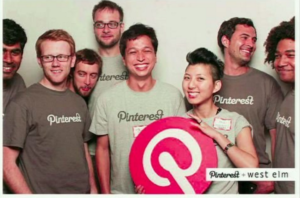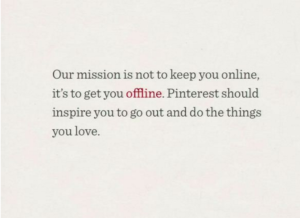In the age of traditional blogs, David Karp wanted a place where he could use a tumbleblogging format, better known today as a microblogging platform. This style of blog would offer the ability to share multimedia posts such as videos, short text posts, and pictures. After waiting for a while, he decided he was done waiting and ended up launching his own microblogging platform. That platform is what we know today as Tumblr.
At the age of 20, Karp launched Tumblr with the help of Macro Arment. The site was released in February of 2007, and within just two weeks, Tumblr had over 75,000 users. Today, Tumblr boasts over 359 million blogs. Six years after its launch, Karp allowed Yahoo! to acquire Tumblr for $1.1 billion.
Karp is admirable in his ambition to start his own tumblelog. He saw a need and since it was not being filled, he filled it himself. He created a platform that did not exist yet and paved the way for others to come along in different iterations—Pinterest, WeHeartIt, etc. His idea and drive certainly paid off literally, but seeing how he took the initiative to do it himself inspires me not to think of myself as incapable of creating something just because no one has done it before. Karp stepped out into an area no one had explored yet, and created a new market and space for innovation.

 As a homeschooler, Natalie and her family had to buy all of their books themselves, and as there was no curated or organized way to buy used book, they usually ended up buying these books new from publishers, which got very expensive. However, Natalie noticed that after he finished with a book, it just stayed on her bookshelf until it either was given away to a family friend or sold at a significantly reduced price at a yard sale. Natalie considered how wasteful this was, both on the buying end and the reselling end because there was no organized platform for homeschoolers to interact with each other in this manner. Out of this pain came her idea of Hoot Book Revival, which is an app and website on which homeschoolers can resell their books and buy used books from other homeschooling families at a reduced cost. This benefits both the buyer and the seller, because people looking to buy books can get them much cheaper than they can new books, and people looking to sell books can sell them for more than they could at a yard sale.
As a homeschooler, Natalie and her family had to buy all of their books themselves, and as there was no curated or organized way to buy used book, they usually ended up buying these books new from publishers, which got very expensive. However, Natalie noticed that after he finished with a book, it just stayed on her bookshelf until it either was given away to a family friend or sold at a significantly reduced price at a yard sale. Natalie considered how wasteful this was, both on the buying end and the reselling end because there was no organized platform for homeschoolers to interact with each other in this manner. Out of this pain came her idea of Hoot Book Revival, which is an app and website on which homeschoolers can resell their books and buy used books from other homeschooling families at a reduced cost. This benefits both the buyer and the seller, because people looking to buy books can get them much cheaper than they can new books, and people looking to sell books can sell them for more than they could at a yard sale. When I asked Natalie about how this business came about and what need it was filling, she said, “I suppose the core of the business idea was identifying an underrepresented group, and how their market needs weren’t being addressed, because the business pitch itself is pretty simple.” Natalie’s website allows the customer to buy and sell books, as well as collaborate with other homeschoolers on which lesson plans and books are best. Hoot Book Revival also has an option where people can post their books and let Hoot do all the work in finding people to sell them to, making the customer experience more enjoyable and less labor intensive.
When I asked Natalie about how this business came about and what need it was filling, she said, “I suppose the core of the business idea was identifying an underrepresented group, and how their market needs weren’t being addressed, because the business pitch itself is pretty simple.” Natalie’s website allows the customer to buy and sell books, as well as collaborate with other homeschoolers on which lesson plans and books are best. Hoot Book Revival also has an option where people can post their books and let Hoot do all the work in finding people to sell them to, making the customer experience more enjoyable and less labor intensive.







